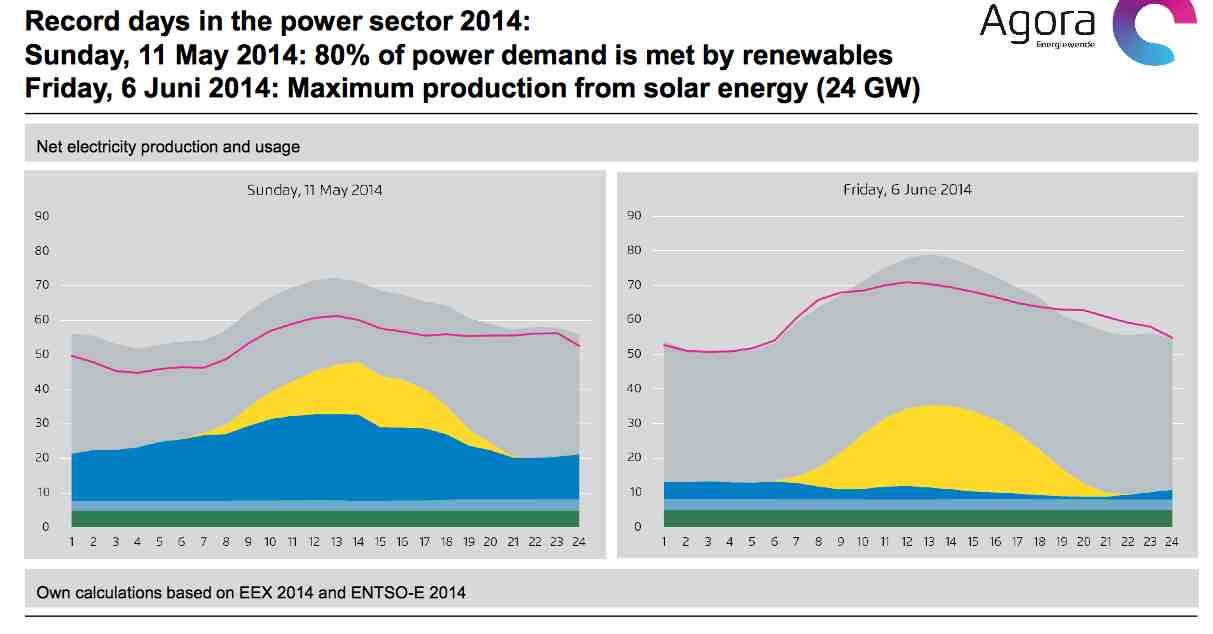There is a great debate about the success or otherwise of Germany’s Energiewende, or Energy Transition. Most of it is uninformed, and much of it is fuelled by the nuclear and coal industries, which have most to lose from the push into renewables by Europe’s most successful economy.
This series of graphs shows how the renewable targets are on track, have lowered emissions, decoupled energy consumption from economic growth, pushed wholesale prices down to record lows, and are now pushing retail prices down. And it has done some interesting things to the energy mix.
The graphs were prepared in a report by Agora Energiewende, a Berlin-based think tank whose former head Rainer Bakke is now the chief advisor to Germany’s energy and economics minister on the future of the Energiewende.
The first graph shows that the renewable target is still on track. This graph shows the target for 2025, and that will continue to a target of 55-60 per cent by 2035, and 80 per cent by 2050.
This next one shows that renewable energy is now the biggest source of energy, ahead of lignite (brown coal).
Over the last two decades, Germany has successfully broken the nexus between electricity demand and economic growth. As this graph shows, economic growth is up 40 per cent since 1990, but electricity demand has fallen significantly in recent years.
And it has also decoupled the rise in emissions that usually accompanies economic growth. Emissions are now at their second lowest level since 1990, after resuming their fall after a brief rise following the post-Fukushima closure of several large nuclear power plants.
The increase in renewable energy and the fall in demand has brought about a fall in power prices – to their lowest levels in decades …
And this is expected to be finally reflected in retail prices. It was always anticipated that retail electricity prices would rise initially due to the renewable energy surcharge, but that this would eventually be reversed as the level of subsidy was reduced and finally removed.
This graph shows the changes in the energy mix, with renewables growing strongly, mostly at the expense of nuclear in recent years, although coal and lignite are down from their 1990 levels.
Black coal is also at its second lowest level since 1990 …
Contrary to expectations of the nay-sayers, Germany has increased its energy exports after the nuclear phase out ….
Here is some more information on the changes in renewable energy mix …
Which has led to some interesting days of generation. These two landmark days show record renewable contribution and record solar contribution.
This is what the renewables contribution looks like over the autumn/winter period, with an increasing contribution from wind as the weather turns cold …
And this is what it looks like in spring, as solar increases its contribution ….
Despite all this, and the predictions that this would herald a “golden age” of gas, because of its flexibility and ability to fill in the gaps, the use of gas in power production is now heading towards record lows, partly due to its high cost, and because other plants have learned to be more flexible.





















